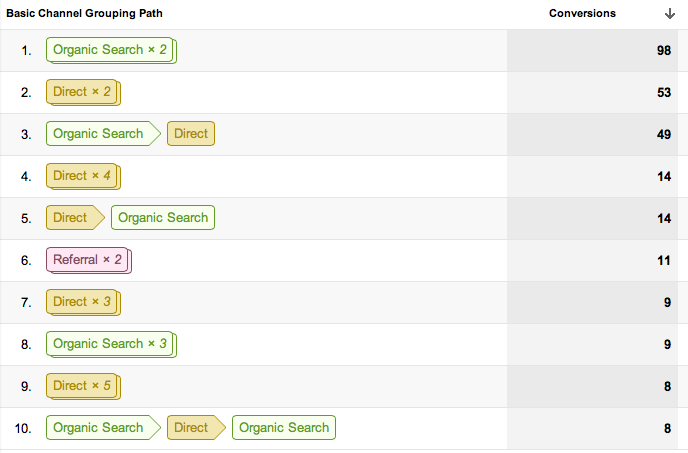What Data Is Google Analytics Goals Unable to Track: Essential Details
What Data Is Google Analytics Goals Unable to Track: Essential Details
Blog Article
Introducing the Blind Destinations: Recognizing What Google Analytics Goals Can not Measure
In the world of digital analytics, Google Analytics stands as an effective device for monitoring and assessing online user interactions. In the middle of its durable abilities, there exist blind places that commonly evade dimension. what data is google analytics goals unable to track. Understanding what Google Analytics objectives can not measure is crucial for obtaining a comprehensive view of customer behavior and interaction. As we look into the intricacies of these dead spots, we reveal an intricate internet of uncharted areas that hold important insights into individual activities and inspirations, tough traditional knowledge and shedding light on the limitations of our data-driven understanding.
Individual Behavior on External Platforms
Recognizing exactly how individuals connect on outside systems is essential for enhancing on-line approaches. Exterior systems, such as social networks networks, reference websites, and online discussion forums, play a substantial function in driving web traffic to a firm's web site. By evaluating individual actions on these systems, businesses can get beneficial understandings into the effectiveness of their advertising and marketing efforts and the preferences of their target market.
One key aspect of customer habits on outside systems is the recommendation source. By tracking where the individuals are coming from, organizations can identify which platforms are driving the most traffic to their site. This info can help firms allocate their sources a lot more successfully, concentrating on the systems that generate the most effective outcomes.

Offline Conversions and Interactions
Assessing user behavior on outside platforms provides useful insights into on-line approaches; nonetheless, thinking about offline conversions and interactions is just as imperative for a thorough understanding of a company's total performance. Offline conversions, such as in-store acquisitions or phone questions, play a considerable duty in several companies' success.

Acknowledgment Beyond Last Click
When diving right into the world of digital marketing analytics, it ends up being essential to look past the single touchpoint of the last click for a much more comprehensive understanding of attribution. While Google Analytics gives valuable insights right into user habits, relying only on last-click acknowledgment can be limiting - what data is google analytics goals unable to track. Attribution models that surpass the last click supply a much more nuanced view of the customer trip, thinking about all the touchpoints that result in a conversion
Attribution beyond the last click permits marketing experts to assign credit to various interactions along the conversion course, giving a more clear image of the efficiency of different advertising and marketing networks. By discovering multi-touch attribution models such as direct, time decay, or position-based acknowledgment, businesses can much better allocate their marketing spending plans and maximize their techniques for maximum effect.
Recognizing the influence of each touchpoint in the conversion process is crucial for making notified decisions and maximizing ROI. By accepting attribution past the last click, companies can gain much deeper understandings into consumer habits and tailor their advertising initiatives better.
Cross-Device and Cross-Browser Monitoring

Likewise, cross-browser monitoring complements cross-device monitoring by catching user behavior as they switch between different web internet browsers. Recognizing just how users interact with sites on different internet browsers can aid online marketers enhance their online experiences to make certain uniformity and functionality throughout various platforms.
Qualitative Information and User Intent
Recognizing customer intent via qualitative data evaluation is essential for creating targeted electronic marketing methods that resonate with the demands and choices of the target audience. Qualitative data provides understandings right into the 'why' behind user actions, clarifying inspirations, feelings, and choices that measurable information alone can not capture. By evaluating individual comments, remarks, and interactions, marketing experts can reveal valuable details regarding user intent, allowing them to customize their messaging, content, and offerings to much better line up with what their audience is seeking.
Qualitative data additionally helps in recognizing the context in which customers involve with a website or app. This contextual understanding allows marketing experts to produce even more appropriate and customized experiences, ultimately driving greater interaction and conversion prices. By diving into customer intent with qualitative information analysis, companies can gain a deeper understanding of their target market, bring about a lot more effective advertising and marketing strategies that satisfy individuals' needs and assumptions.
Conclusion
Finally, Google Analytics objectives have constraints in determining individual habits on outside systems, offline conversions, acknowledgment beyond last click, cross-browser and cross-device tracking, and qualitative data associated with user intent. what data is google analytics goals unable to track. It is essential for companies to be familiar with these dead spots in order to supplement their data analysis with various other tools and methods to gain a much more detailed article source understanding of their audience and enhance their overall digital advertising and marketing strategies
By analyzing user habits on these systems, organizations can get important insights into the effectiveness of their marketing efforts and the choices of their target audience.
Examining customer habits on outside platforms gives important understandings right into online approaches; nonetheless, thinking about offline conversions and communications is equally essential for a detailed understanding of a firm's overall performance.In digital advertising and marketing analytics, relocating beyond last-click attribution to check out cross-device and cross-browser monitoring is vital for obtaining an all natural understanding of customer interactions across numerous systems and gadgets. By analyzing individual comments, remarks, and communications, marketing experts can uncover valuable details concerning individual intent, allowing them to customize their messaging, material, and offerings to better straighten with what their target market is seeking.
By diving right into individual intent with qualitative data analysis, businesses can acquire a deeper understanding of their target audience, leading to much more effective advertising and marketing strategies that fulfill customers' expectations and requirements.
Report this page